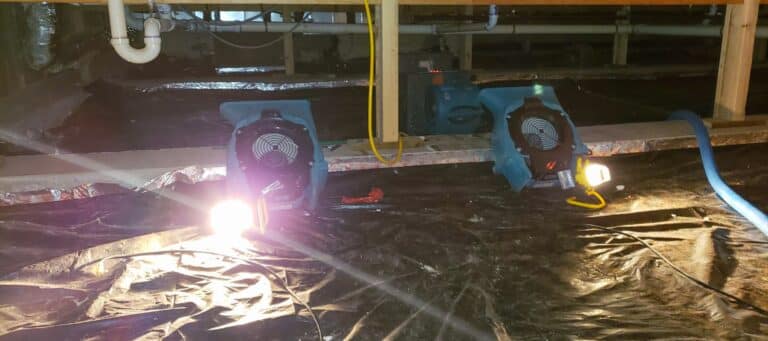Addressing Crawl Space Pricing Questions
Common Crawl Space Pricing Considerations
Owning a home is like taking a ride on your favorite roller coaster. It’s a journey that comes with many highs and lows — one that’s highly thrilling yet frightening at times. Maintaining your living space comes with many responsibilities and critical decisions to make.
When it comes to the structural integrity of your home, these choices will have an impact.
As a family-owned and operated business, G.L. Hunt Foundation Repair understands the importance of making essential decisions for your household. Our company is grateful to have served homeowners across Texas since 1987, making our team a top choice for your home.
When the time comes to have your crawl space assessed, you can trust in our experts for a job done right. We’re here to shed light on crawl space costs and factors to consider when servicing this area.
How Much Does Crawl Space Encapsulation Cost?
Every home is unique, reflecting the individualities of its inhabitants. When looking into encapsulation services for this area, a few circumstances can affect pricing. G.L. Hunt stresses the importance of professional assessment and inspection from our team.
Basic encapsulation services usually cost a few dollars per square foot. More complex scenarios may cost more for labor, mold remediation or other protective measures.
In general, this service can range from about $2,000 to $15,000, with the average service hovering just over $5,000. This is a wide range because of the different factors involved — the square footage, the condition of your existing crawl space and the materials used all affect the final cost.
With our knowledge and expertise, we’re prepared to identify issues and provide you with a tailored quote.
Encapsulation Cost Factors To Consider
When investing in an encapsulation service, a few factors can affect its pricing. Our team is here to help you understand these elements, leading you through the process.
Sizing And Square Footage
The larger the crawl space, the more materials and labor will be required for encapsulating the area. The pricing of this service is typically calculated per square foot, causing larger areas to have higher costs.
Condition Of Existing Space
The initial state of the crawl space can impact the pricing of this service. If there’s a need for extensive cleaning, mold remediation or structural repairs before encapsulation can begin, this will increase the overall cost.
Type Of Materials Used
The quality and type of vapor barrier, insulation and sealing materials can affect encapsulation pricing. Thicker, more durable vapor barriers and high-quality materials are more costly. However, they offer better moisture control and insulation, potentially leading to long-term savings.
Is Crawl Space Encapsulation Worth The Cost?
Encapsulating your crawl space can be a worthwhile investment for several reasons. This protective element offers many benefits for your home, such as:
- Enhances your home’s energy efficiency
- Lowers energy costs
- Can increase property value
- Protects your home from moisture-related structural issues
- Creates a more comfortable living environment
- Reduces moisture buildup and mold growth
- Deters pests and prevents infestation
Considering these factors, crawl space encapsulation can be worth the cost for homeowners looking to protect their investment. The decision ultimately depends on your specific needs, your local climate and your long-term plans for your property.

How Much Does Crawl Space Insulation Cost?
The total cost of insulation can vary, with factors like sizing, insulation type and repair needs playing a role in pricing. Polystyrene materials typically cost less and are an efficient, water-resistant form of insulation. Spray foam insulation is more costly than other types but comes in more affordable polyurethane options.
Insulating your crawl space can cost you between $1-$5 per square foot — depending on the state of your property and material costs — with spray foam insulation coming in at almost twice that. The labor involved in removing existing insulation before replacement will also add to your investment.
When choosing to insulate the space beneath your home, G.L. Hunt is here to lend a helping hand. Our foundation specialists are capable of assessing your space and helping you determine the best material for your home. You can expect transparency during every service, providing you with a durable and long-lasting household.
Trust G.L. Hunt For Texas Crawl Space Services
For the best foundation solutions in Texas, look no further than G.L. Hunt Foundation Repair! With financing options and free estimates, our team is glad to offer assistance for your home. You can expect excellence and complete satisfaction when you choose our services.
Contact us today to learn more about crawl space pricing for your next service!








